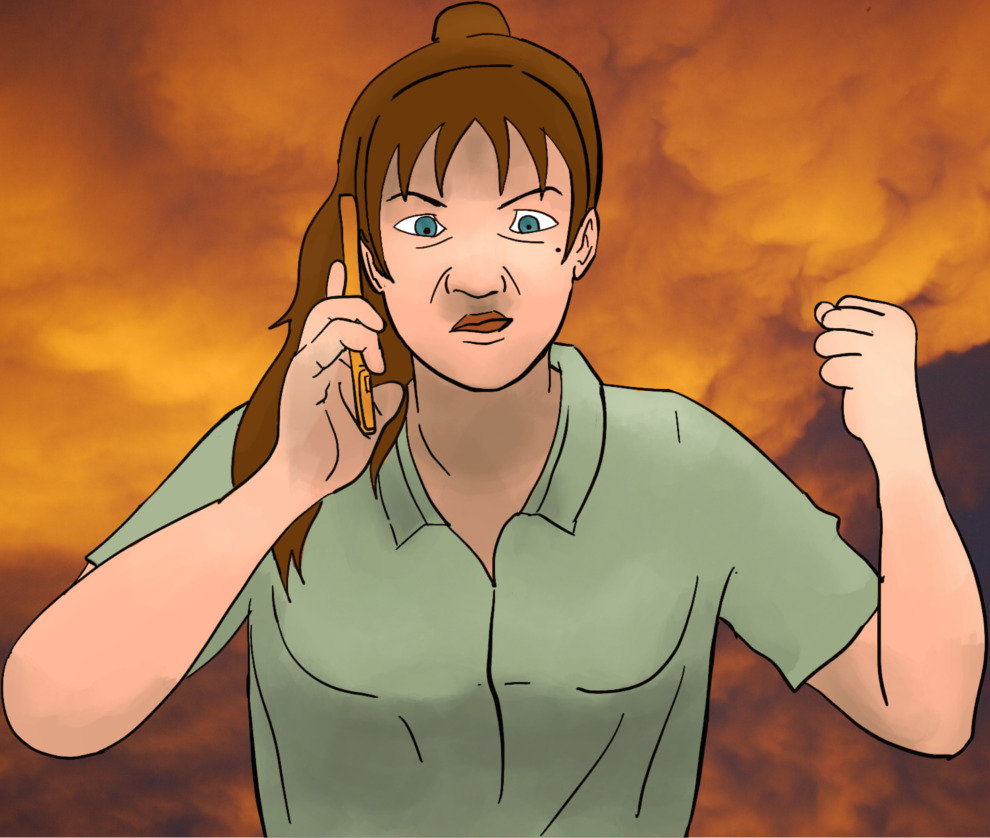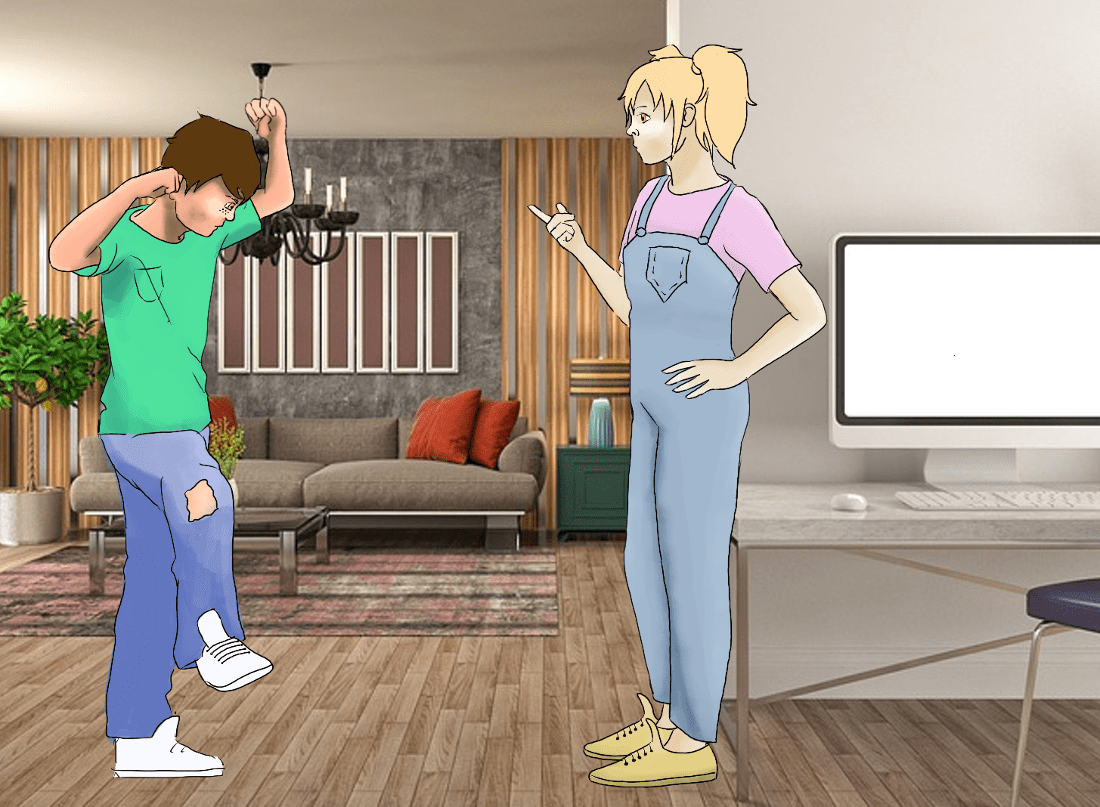
|
 |
 |
|
 |
Any intelligent fool can make things bigger, more complex, and more violent. It takes a touch of genius — and a lot of courage to move in the opposite direction, E.F. Schumacher
We all know difficult people, complicated people who make us feel uncomfortable, angry, or even miserable. People who are fussy, impatient, selfish, violent, perfectionist, bossy, etc. Toxic people who love playing the blame game, who doubt, question, and criticize our actions and decisions constantly.
Let us see what types of difficult people you need to deal with and how. We’ll start with violent people. A violent person is someone who cannot control his or her mood and emotions. Typically, he or she is under mounting stress with increasing anxiety, tension, and fear. He or she feels helpless, impotent, and/or victimized.

Once upon a time, there was a village in the Gobi Desert. Prosperous and proud people lived there for generations. A small beggar appeared in the road and asked some passers-by for a glass of water politely. They despised him by saying: “Well, that’s not going to happen. Leave us alone. What do you think that we are, Buddhist monks?” The man felt humiliated and left them cursing their luck. A little later, he tried again with some other pedestrians, but the response was quite similar: “Leave us alone! Do not bother us and make us waste more time, we have enough problems of our own!”
The little man was turning into a bigger, uglier, and more violent creature with every negative answer and interaction. Later on, he saw a large caravan. He stopped them and exclaimed: “Give me some water!” There was a big fight between the creature and the proud nomadic travelers. However, although they were many, they couldn’t defeat him. The monster grew and became very strong. Since then, his legend preceded him amongst the Mongol people. When anyone met him, they fled aghast in great fear from its terrible appearance. They were completely terrified by his fame, physical appearance, and ways, and he kept growing without any restraint. He became so furious with them that he decided to destroy their imperial court in Ulan Bator, to give them what he thought they deserved.
As he approached the palace walls, a dozen of the most feared warriors stopped him and fought against him, but it was completely impossible to defeat him. The creature was incredibly strong, very big ― he was twenty feet by now ―, and extremely violent. A final battle took place between the monster and thousands of soldiers, but the outcome was quite the same.
When he finally got rid of everyone and entered the palace, a child, the little emperor, saluted him: “What a joy it is to see you! Finally, you’ve decided to visit me.” The vile creature could barely believe his ears. He was too stunned by the warm greeting he had just received. Then, the prince offered him some food: “Let me offer you something to eat. You must be starving. Do you like cakes?” “Yes!,” he roared, he was still in a bad mood and very suspicious. So the little prince offered him cakes, something to drink, and talked to him. The vile monster felt welcome and accepted for the first time ever. For every act of kindness and generosity, the creature grew smaller and smaller, until he was as tall as the prince. Finally, he disappeared, never to be seen again.
The moral of this classic Buddhist tale is that you should never return evil for evil or insult for insult. Two wrongs don’t make a right, responding with evil to evil, violence to violence means letting evil spread through us, a never ending cascade of retribution and revenge where no one ultimately survives intact, everyone suffers and loses many things in a senseless war. It is an infinite and destructive cycle that will only offer you and all those around you pain, remorse, and misery.
There are many situations and circumstances, but if someone is in a fit of anger, s/he has drunk alcohol, taken drugs, or is carrying weapons, let her/him blow off steam, go away, run, and more importantly, do not argue or discuss anything at all with her/him.

Consider that sometimes is better to let it go, especially when it is a random act, some occasional and sporadic behavior, and particularly if it is someone more powerful than you and you have something to lose, for example, if this person is your boss or teacher.
The general way to deal with them is to stay calm. Keep your cool, control your emotions and non-verbal communication, and talk in a lower tone than the violent person. Besides, although you should try to be kind and show empathy, you should also explain your point of view assertively at the right time, how you feel about it, and why you think is wrong, unnecessary, and unfair.
One tactic is to ask them to explain what has happened in their own words. Then, listen actively, maintain eye contact, do not interrupt them, and try to ignore rude insults, aggressive tone, etc. during this first moment. Ask them questions to clarify confusing issues, so you can avoid misunderstandings and show that you are paying full attention and want to know what’s going on. Learn to differentiate between their style of communication ― how ― and the content being delivered ― the message ―. Consider that behind a completely disproportionate, inappropriate, or even unacceptable way of talking may lie some truth. In this case, try to deal with it, so that their needs and worries are satisfied.
For example, an aggressive child may be constantly disrupting the class and, when being scolded, he reacts by yelling at the teachers. Another teacher or the head of studies should remove him from the context (the classroom) and talk to him/her alone. Then, he should listen actively to him/her with patience and kindness. It is important to know what has really happened. Perhaps, there was a problem during playtime before class; he has been bullied, beaten, or called names; there is a serious family problem, such as a divorce, a serious illness, etc. Once the underlying problem is addressed, this student should understand that violent behavior, including verbal aggression, is not acceptable and not tolerated under any circumstances.
In general terms, as the violent person explains the facts about what has happened, why they reacted in that way, and calm down, we can provide them with positive feedback and constructive criticism. It is very important to tell them how we felt about it, the impact of aggressive behaviors on others, and what they could have done differently. We all make mistakes, there is no doubt about it, but we must learn to control our temper, because violent behavior is not acceptable, amongst other things, because we do not deserve it, e.g., I respect you, but that behavior is unacceptable and I won’t tolerate it.
Punishment ― sending children out of class, after-school detentions, lunch detentions, expelling or suspending children, writing lines ― and particularly corporal punishment ― the cane or slipper ―, have traditionally been used to modify kids’ behavior, and many think that it should be reintroduced, “Nearly half of parents back corporal punishment,” BBC, 16 September 2011.
Some people argue: it works; swift punishment may prevent bad behavior later; bad behavior and violence are on the increase in schools nowadays; it helps, especially those who are bullied; other interventions have little effect, if any, etc. However, punishment can generate aggression, feelings of insecurity, fear, anxiety, resentment, and it hardly achieves its goals because it typically only works in the presence of punitive authority and the “good” behavior is rarely generalized. 
If punishment is to be carried out, as a last resort, kids should know which behaviors are not tolerated, why they are not acceptable, and what consequences they face next time they misbehave or disobey, e.g., sitting in a chair facing the wall; writing an essay about growing up or problem-solving strategies; restricting the use of TV, tablet, mobile phones, video-consoles or PCs; doing extra reading, etc. Furthermore, it should be: